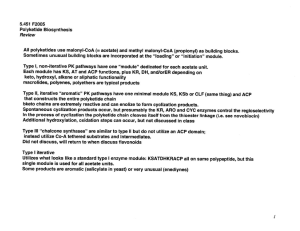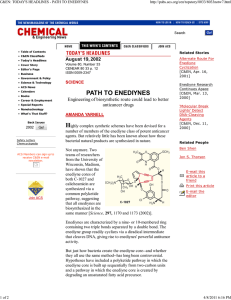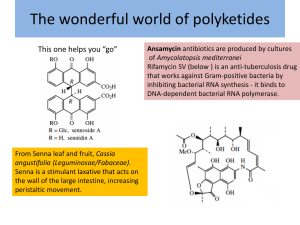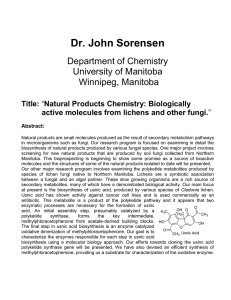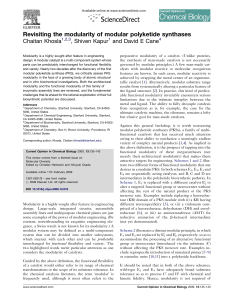Page 1 of 1
advertisement
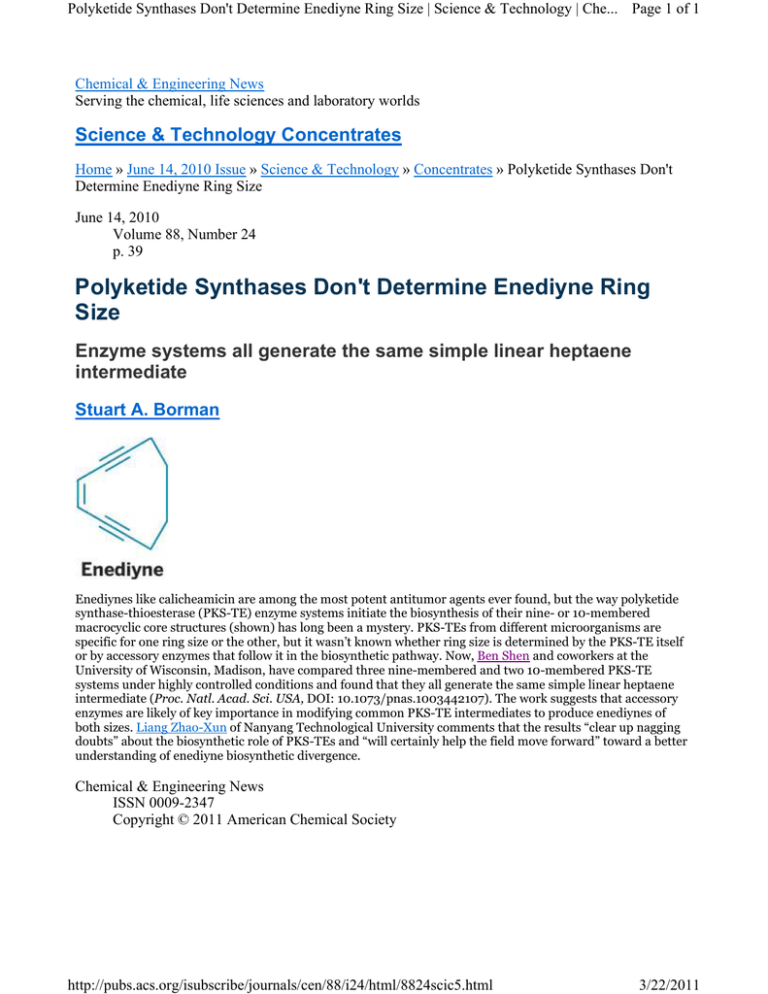
Polyketide Synthases Don't Determine Enediyne Ring Size | Science & Technology | Che... Page 1 of 1 Chemical & Engineering News Serving the chemical, life sciences and laboratory worlds Science & Technology Concentrates Home » June 14, 2010 Issue » Science & Technology » Concentrates » Polyketide Synthases Don't Determine Enediyne Ring Size June 14, 2010 Volume 88, Number 24 p. 39 Polyketide Synthases Don't Determine Enediyne Ring Size Enzyme systems all generate the same simple linear heptaene intermediate Stuart A. Borman Enediynes like calicheamicin are among the most potent antitumor agents ever found, but the way polyketide synthase-thioesterase (PKS-TE) enzyme systems initiate the biosynthesis of their nine- or 10-membered macrocyclic core structures (shown) has long been a mystery. PKS-TEs from different microorganisms are specific for one ring size or the other, but it wasn’t known whether ring size is determined by the PKS-TE itself or by accessory enzymes that follow it in the biosynthetic pathway. Now, Ben Shen and coworkers at the University of Wisconsin, Madison, have compared three nine-membered and two 10-membered PKS-TE systems under highly controlled conditions and found that they all generate the same simple linear heptaene intermediate (Proc. Natl. Acad. Sci. USA, DOI: 10.1073/pnas.1003442107). The work suggests that accessory enzymes are likely of key importance in modifying common PKS-TE intermediates to produce enediynes of both sizes. Liang Zhao-Xun of Nanyang Technological University comments that the results “clear up nagging doubts” about the biosynthetic role of PKS-TEs and “will certainly help the field move forward” toward a better understanding of enediyne biosynthetic divergence. Chemical & Engineering News ISSN 0009-2347 Copyright © 2011 American Chemical Society http://pubs.acs.org/isubscribe/journals/cen/88/i24/html/8824scic5.html 3/22/2011
